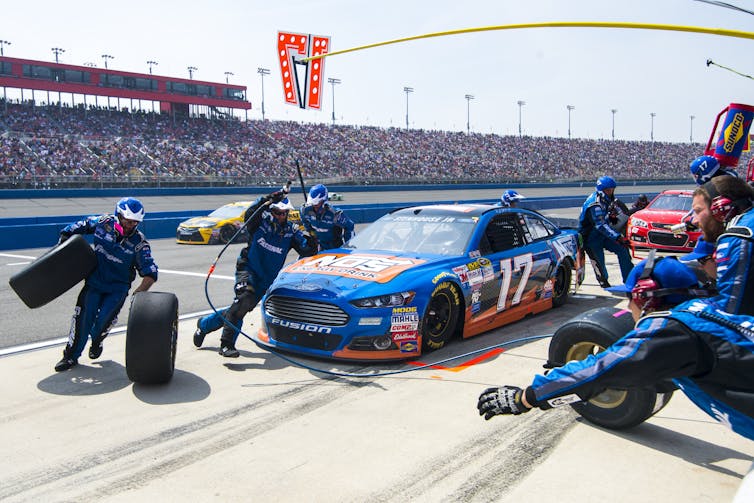China’s automotive industry has witnessed a complete revolution in the past decade, transitioning from the production of rudimentary Western clones to the production of automobiles that are consistent with the highest-quality vehicles worldwide. They are also being produced in vast quantities by China, which is the global manufacturing behemoth.
Nevertheless, Chinese automobiles face obstacles in attracting customers in Europe. The majority of the electric vehicles imported into Europe, which are manufactured in China, are accumulating in port car parks for up to eighteen months as their manufacturers struggle to deliver them to consumers’ driveways.
However, what is the reason for this? China’s electric vehicles are garnering especially favorable assessments. In terms of technology, range, and quality, I can confidently say that they are comparable to, if not superior to, the most renowned European brands, based on my personal experience with them.
Nevertheless, confronting an established market is a complex undertaking. Skepticism from consumers, a lack of brand recognition, trade protectionism, and accelerated obsolescence will be the challenges that Chinese manufacturers will face.
Buyers’ lack of assurance
The Japanese strategies implemented during the 1960s and 1970s are analogous to the expansion of the Chinese automotive industry. Japanese products were commendable at that time; however, they were inferior in terms of refinement, design, and durability when contrasted with their Western counterparts. In contrast to the elegant designs of European automobiles, automobiles from Japan were perceived as tinny, underpowered, and prone to rust.
A further recollection of Japan’s participation in the Second World War was still vivid in the minds of purchasers, particularly Americans, who were hesitant to extend forgiveness to a country that had instigated the attacks on Pearl Harbor. However, Japan gradually transformed this circumstance into the automotive superpower of the 1990s and 2000s by emphasizing dependable, comparatively inexpensive, and increasingly fashionable automobiles.
Numerous Westerners maintain a skeptical view of China, and its manufacturers are in a comparable predicament as a result of their recent history of producing both authorized and unauthorized replicas of European automobiles. Nevertheless, Chinese automobiles are rapidly advancing to the point where they surpass and rival existing alternatives, drawing inspiration from the Japanese.
Additionally, China has acquired some of the most extraordinary engineering expertise on the planet through strategic acquisitions of well-respected brands, including Volvo, Lotus, and MG.
Chinese manufacturers have been unsuccessful in converting existing consumers into brand loyalists, despite the acquisition of western brands such as BMW, Porsche, Ferrari, and Ford. In order to attract these consumers, Chinese manufacturers will need to progressively cultivate a reputation for dependability and even success in motor sports, similar to their Japanese counterparts. The prestige automobile industry is characterized by intense competition.

Ford has a substantial history of racing.
During the 1960s, Ford dealerships were the pioneers of the phrase “Win on Sunday, Sell on Monday.” This is an aphorism that asserts that consumers are more likely to purchase a vehicle if they witness it winning a race.
The longevity of a manufacturer’s reputation for dependability has been personally experienced by buyers, which provides a significant advantage in terms of brand loyalty. The fact that Chinese manufacturers do not have a well-established dealer network outside of China further demonstrates their challenge in competing with established brands.
Commercial conditions that are exceedingly challenging
China provides products at a lower cost than both the United States and Europe. Chinese automobiles are less expensive to manufacture and purchase as a result of economies of scale, efficient transportation routes, and economical labor.
However, they are subject to substantial import tariffs in a number of countries. Currently, the European Union imposes an import tariff of 10% on each automobile that is imported. Automobile importation from China into the United States is subject to a 27.5% tariff.
Tariffs have the potential to rise even further. The European Union is currently conducting an investigation to ascertain whether its tariff is excessively low. Imported automobiles will be subject to retroactively increased duties if this is determined by the end of the year.
In particular, electric vehicles and automobiles are currently experiencing a period of rapid development and upgrade. Historically, automobile models have been manufactured for a market life of four to seven years, with occasional minor modifications to the specification level, color scheme, or availability of features.
Nevertheless, Tesla has retracted this assertion. For example, the Tesla Model S has been subjected to nearly continuous hardware updates since its introduction in 2012, which have rendered it virtually unrecognizable. Automobile manufacturers in China have acknowledged this. They introduce new models at a rate that is approximately 30% faster than that of the majority of other countries.
Tesla is offering complementary hardware upgrades to owners of older vehicles in order to modernize them. In contrast to the purchasing process of automobiles that adhere to a more conventional update cycle, the rapid pace at which Chinese manufacturers introduce new models without an assurance of software support may cause purchasers to be concerned that the item they have acquired will quickly become obsolete.
Consistent achievement
A significant number of these factors are subject to change. Additionally, they correspond more closely with private purchasers than with business purchasers, who prioritize cost. It would be prudent for Chinese manufacturers to intensify their efforts to enter this market.
In both the United Kingdom and Europe, the fleet market surpasses the private market. The market is provided with additional information regarding the dependability of the automobiles and the number of automobiles on the road is increased by the sale of volume to fleets and rental companies.
Success in a novel market, such as the European Union, will necessitate a significant amount of effort and the encounter of numerous challenges. However, China’s laser-like focus on its global initiative is undeniable. The potential for a turnaround in the present shortage of purchasers has not yet been determined. However, China’s strategic approach and unwavering determination have the potential to secure its success in the European Union market.
